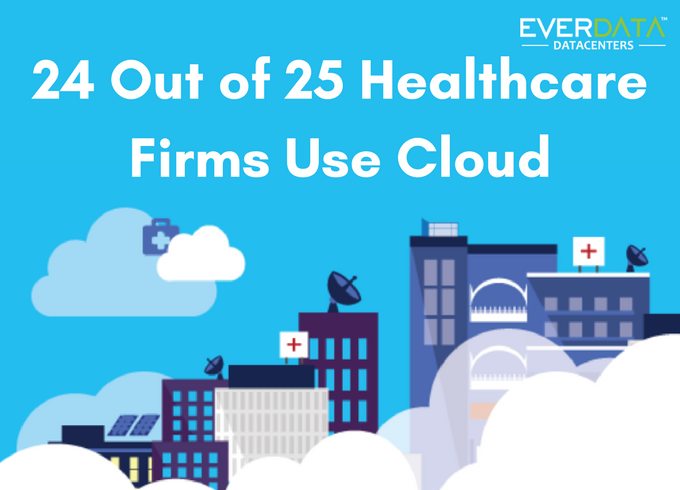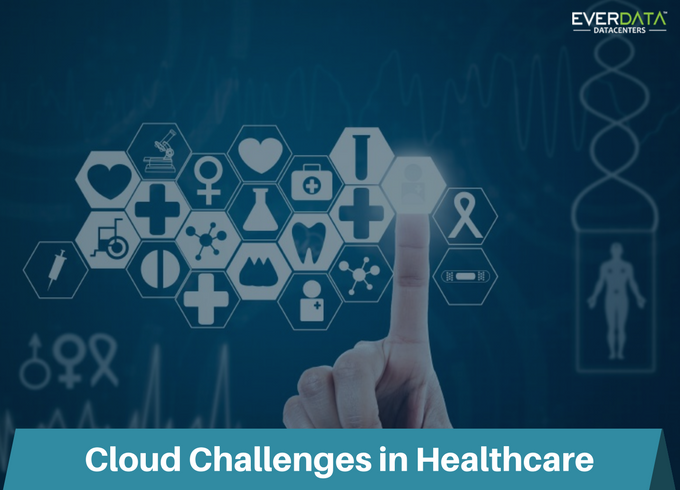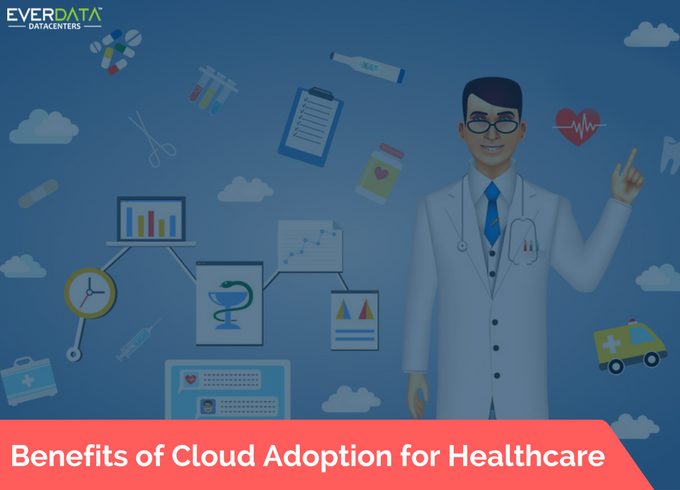
Submitted by Support Team on

It is no mystery that healthcare industries lag behind most other industries in adopting new technologies. They must modernize their IT infrastructures and massively overhaul their paper-based workflows etc. It’s no wonder that healthcare organizations are often slow to move.
Enter cloud computing. A panacea?
60% say that cloud computing will be a major pro in the healthcare business in the succeeding four years. Healthcare providers are welcoming cloud services to reduce IT cost, enhance employee productivity and improve patient results.
[Tweet “60% say that cloud computing will be a major pro in the healthcare business in the succeeding four years.”]
While technology is improving the way healthcare is delivered, the sensitivity of patient data has not changed.
One of the major advantages that cloud computing gives the healthcare industry is the commitment of effective health services and enhanced doctor-patient relations.
With the cloud, data concerning patients’ examinations and procedures can be made accessible, securely, on their phone, computer, tablet, etc.
Cloud also generates a one-on-one relationship between the patient and doctor.
Doctors can communicate and stay connected with their patients comfortably. Cloud computing also empties up time for physicians, providing them to focus longer on their patients, rather than wasting unnecessary time on paperwork.
Tasks like scheduling meetings, making referrals, or completing patient history can be performed anyplace at any time with greater effectiveness.
Cloud Challenges in Healthcare

We have learned that healthcare lags behind another enterprise on technology enactment, and adopting the cloud is unquestionably in that division.
Healthcare providers meet many difficulties as they examine moving to a cloud model. Once these challenges have been fascinated, cloud technology will become less a query of “if” and more a query of “when.”
[Tweet “Cloud technology will become less a query of “if” and more a query of “when.””]
# Privacy Challenges
Privacy and security position at the peak of the list of reasons for slow enactment rates. The probability that patient information could be misplaced, maltreated or fall into the wicked hands affects approval.
Breach of patient confidentiality carries hefty fines, covering notable costs of recovery and patient notification.
A potential solution is a private or hybrid cloud computing model. In this case, the data still lives at the customer data center, and a certain degree of control still exists for companies to manage patient privacy.
The organization can also guarantee that the data center complies with certain standards, such as NIST and HIPAA require that protected health information (PHI) be secured even as it transfers to the cloud.
# Security Challenges
This may be a controversial point where healthcare providers are concerned. There are a lot of security questions. But A cloud provider will have security experts using the advanced software and patches to its data center.
Secure way to the physical property will be well supervised, and many policies, processes, and mechanisms will be in place to ensure data security.
# Workflow Challenges
As it can be hard to establish change everywhere in healthcare provider organizations, we may believe that choosing of a cloud model would present vital change management concern for vendors.
For example, the current practice of inquiring a diagnostic exam. A practitioner fills out an application form with patient details, history and the reason for the exam. It will send to the radiology unit for scheduling.
The clinical faculty books the appointment and notifies the doctor, who advises the patient, who has a dispute with the appointment time. Back and ahead it goes.
Now, suppose an electronic scheduling method based in the cloud, whereby the doctor registers all the appropriate information and the system settles the most suitable time for examination and notifies the patient immediately with possible choices.
The patient can logs in and picks the best time for the test, and the system books the appointment.
It looks easy, but serious attention should be given to staffing requirements within the team IT section.
Note: What is better dedicated server hosting or cloud hosting?
Benefits of Cloud Adoption for Healthcare

These challenges may add to the slow adoption of cloud technologies but are not stopping cloud growth. Healthcare Companies are weighing the benefits against the risks, As more providers migrate to the cloud.
#Collaboration solutions
Early achievements of cloud-based physician collaboration solutions such as remote video conference physician visits are being tested.
Continuing such offerings to a mobile environment for rural telehealth is becoming more real with expansive wireless broadband and smartphone enactment.
Cloud technology supports collaboration and team-based care offering and the strength to use applications based on business model requirements and a standard set of clinical information.
Have a look Why Cloud Is Essential For Your Business?
# Telemedicine
With the rise in availability of mobile technologies and intelligent, medical devices, telemedicine has increased to include not only teleconsultations and telesurgeries, but also history health exchange, video-conferencing, and home monitoring.
Cloud computing and the related ease of services deployment and data storage is an enabler for telemedicine.
[Tweet “Cloud computing and the related ease of services deployment and data storage is an enabler for telemedicine.”]
#Big Data
Healthcare companies turn to cloud computing to save on the costs of storing hardware locally. The cloud holds important data sets for EHRs( electronic health records), radiology images and genomic information for clinical drug tests.
Endeavoring to share EHRs among departments in various geographic areas without the benefits of cloud storage could delay treatment of patients.
# Clinical Research
Many pharmacology vendors are commencing to tap the cloud to enhance research and drug advancement.
The ‘explosion of data’ from next-generation sequencing as well as the growing importance of biologics in the research process is making cloud-based computing “an increasingly important aspect of R&D”.
Popular cloud vendors have developed pharma-specific clinical research cloud offerings with the goal of lowering the cost and development of new drugs.
# Electronic Medical Records
Clinics and doctors are originating to see cloud-based medical records and medical image archiving services coming on-line.
The purpose is to offload a hard job from hospital IT staffs and let them concentrate on helping other imperatives such as EMR adoption and improved clinical support systems.
Conclusion
Cloud technologies have a huge role to play in the future of healthcare delivery. Thus, cloud computing could be a permanent solution or game-changer for a healthcare industry; on its service contributions, operating models, abilities and end-user services.
With cloud computing, the hurdles faced in the healthcare industry on managing the medical information, storing data, retrieving data or accessing could be eliminated.
Meanwhile, the healthcare industry can overtake other industries in the use of technology with the adoption of cloud services.
Thus, obtaining or monitoring the healthcare related information across the globe would be easier with the implementation of cloud services.
I believe If you combine data with a cloud, you have wisdom.
[Tweet “I believe If you combine data with a cloud, you have wisdom.”]
Tip: Things you should Know before moving your business to cloud.


Add new comment